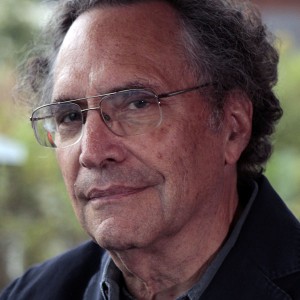 At the Houston Cinema Arts Film Festival, fair use was celebrated as a powerful tool for the arts. Indeed, museum practice is already changing, as a result of the creation of the Code of Best Practices in Fair Use for the Visual Arts.
At the Houston Cinema Arts Film Festival, fair use was celebrated as a powerful tool for the arts. Indeed, museum practice is already changing, as a result of the creation of the Code of Best Practices in Fair Use for the Visual Arts.
Film arts.
Filmmaker Gordon Quinn, whose work through Kartemquin Films was featured in a festival retrospective, explained that Kartemquin’s films on art and artists depend upon fair use. For instance, Golub (1988) features an artist whose work draws from images in newspapers and magazines—all copyrighted. “We couldn’t have made it without fair use,” he said.
At the time the film was made, fair use was routinely employed. But post-Napster, filmmakers became increasingly wary, as large rightsholders conducted huge publicity campaigns warning against any kind of copying. “When we made Hoop Dreams (1996), we actually paid to clear someone singing ‘Happy Birthday,’” he recalled ruefully.
Since documentarians created the Documentary Filmmakers’ Statement of Best Practices in Fair Use, though, Kartemquin and many other production houses have returned to employ fair use routinely, now with the added confidence given by the fact that insurers insure for it.
Two Kartemquin films shown at the festival lavishly employ fair use, he said. Almost There features a visionary artist whose out-of-control personal life leads to complex ethical choices for the filmmaker. On Beauty features the work of a fashion photographer who takes portraits of people not conventionally thought of as beautiful. “Having a code to tell us what are field-wide best practices for fair use changed everything in our field, in terms of making documentaries that do what they are supposed to,” he said.
In the museum.
Consuelo Gutierrez, Digital Asset Manager at the Menil Collection in Houston, said that the creation of the visual arts Code changed the Menil’s practices dramatically.
“We had been paralyzed by not being able to employ fair use,” she said. “Our previous rule of thumb was ask permission every time.
“The big push for us to claim fair use was the relaunch of the website, just when the CAA code came out. We were jumping for joy, because now we could do so much more. We put more images up at a larger size, and we’ll add more and more to our collections pages there.
“Another way we rely on fair use is for press purposes. When we promote our exhibitions, which is also mission-driven and educational work, we can’t be asking a rights holder every time we do something. We have to let the public know when we hve an exhibition, and what they will see there, and what kind of programming we have. We see our public programs brochures and membership brochures and bulletins the same way—it’s public information and education.
“As well, when we have installation shots of exhibitions, if there are multiple artworks in the shots, we claim fair use and post those pictures. Zeroing in on one particular art work would be different; we wouldn’t want people to think we’re showcasing the artwork without attribution or permission.
“In our publishing, we rely on fair use for the gallery guides, except for the cover, where we believe there might be an argument that it is primarily decorative. We use fair use for comparative illustrations, though we limit the size of the images to about a quarter of a page.
“We’re also concerned about being courteous, so we ask permission from artists and copyrightholders if we think they might take offense if we don’t.
“Our library is using fair use in digitizing our collection of gallery guides. A lot of times these gallery guides are the only publications that document the exhibition at all. They’re on our library page as well as OCLC, and we create a stable URL for them.”
Gutierrez said that they expect their practice to develop as they learn more about what is possible.
Digitizing collections.
Mari-Carmen Ramirez, curator at the Museum of Fine Arts, Houston, noted that the museum seized upon the Code in order to expand digital access to the collections, a recent move.
“The goal of these online collections,” she explained, “is to provide visitors with a virtual experience of the museum, hopefully so they’ll come to the museum, and to grant research access to our collections. Making available 67,000 works through the Internet is a daunting task—consider alone the standardization of records, photographing of objects in the collection, building the platfor. But these and many other issues were at least under our control.
“The nightmare area, causing huge anxiety for many people, was copyright clearance. There was a culture of fear. People have visions of apocalypse. The task was too daunting to consider. 70% of the works were in copyright.
“The CAA report code has been so amazing, because it jump started this discussion and took it into different terrain. Until then, all our discussions circled around the idea that we could only show a thumbnail-sized image. But from a researcher’s or an art historian’s pov, that’s very limiting. You want to be able to study them, and use them in slideshows and compare them to other works in scholarship. It wasn’t until the Code that it became clear that fair use was the way to go, and to increase the image size.”
Until the Code, most museum professionals were using digital guidelines created years ago by the Association of Art Museum Directors, which are getting sadly outdated.
“We need to push the AAMD to change its guidelines and adopt this approach instead,” Ramirez said. “They are standard bearers. But they are still stuck at the thumbnail size that is sending a wrong, contradictory message.
“There’s a lot of misinformation, and fear trumps how people think about these issues. So the Code’s stress on the reasoning process is empowering. It’s important to understand the principle and the logic, and then apply it in context. There are no hard lines, and criteria. That’s the most important insight we can gain from this discussion.”



